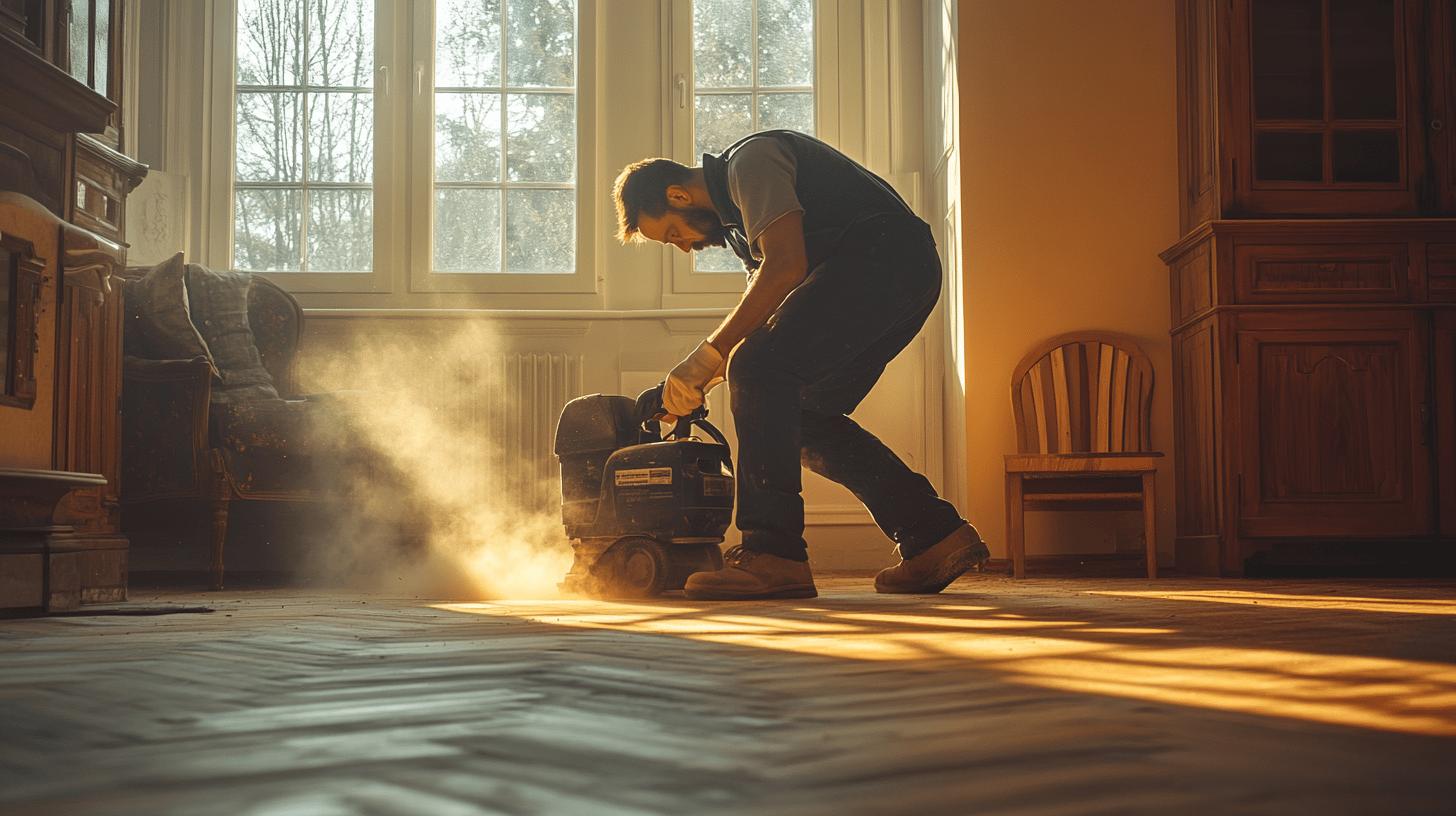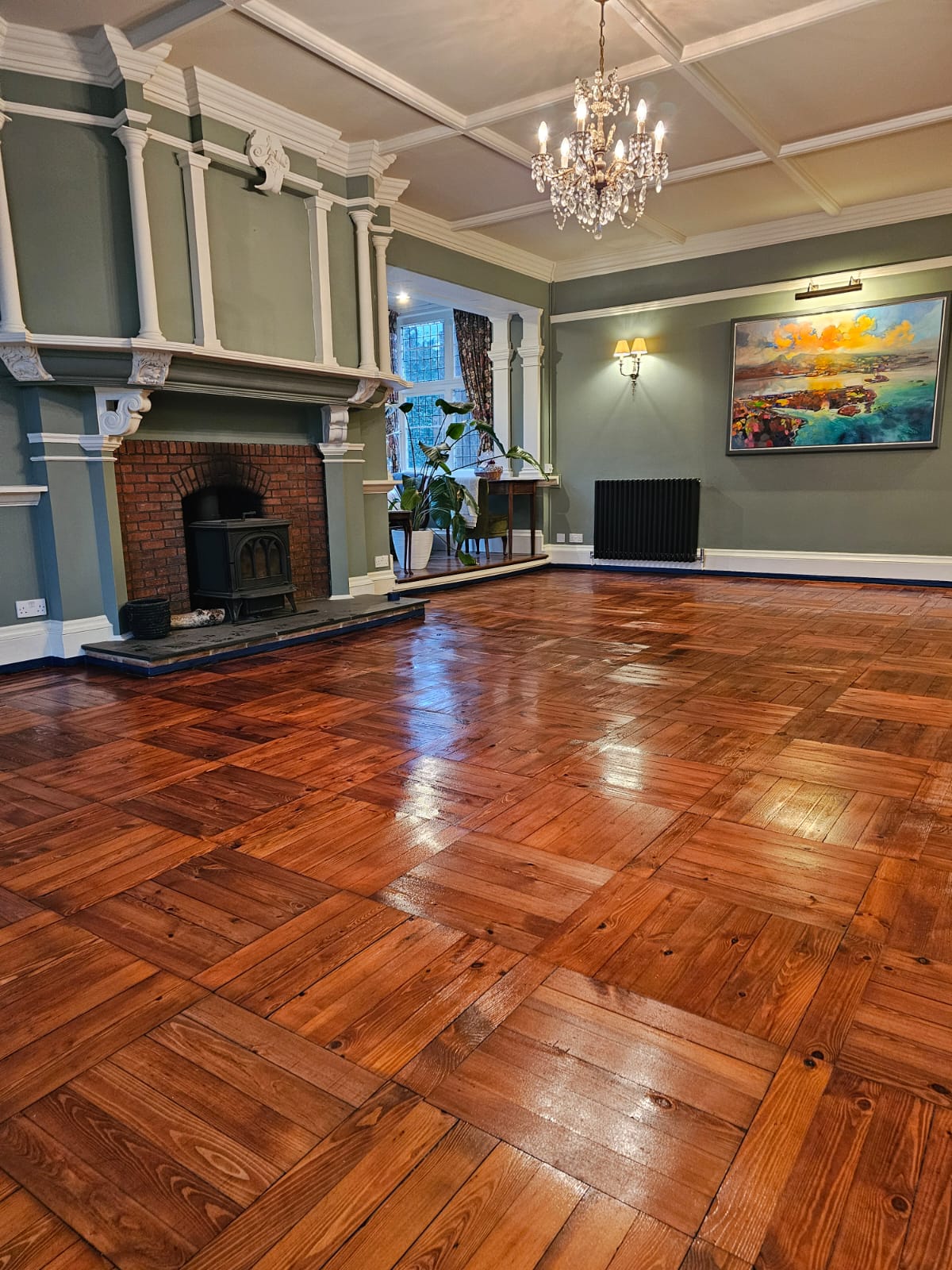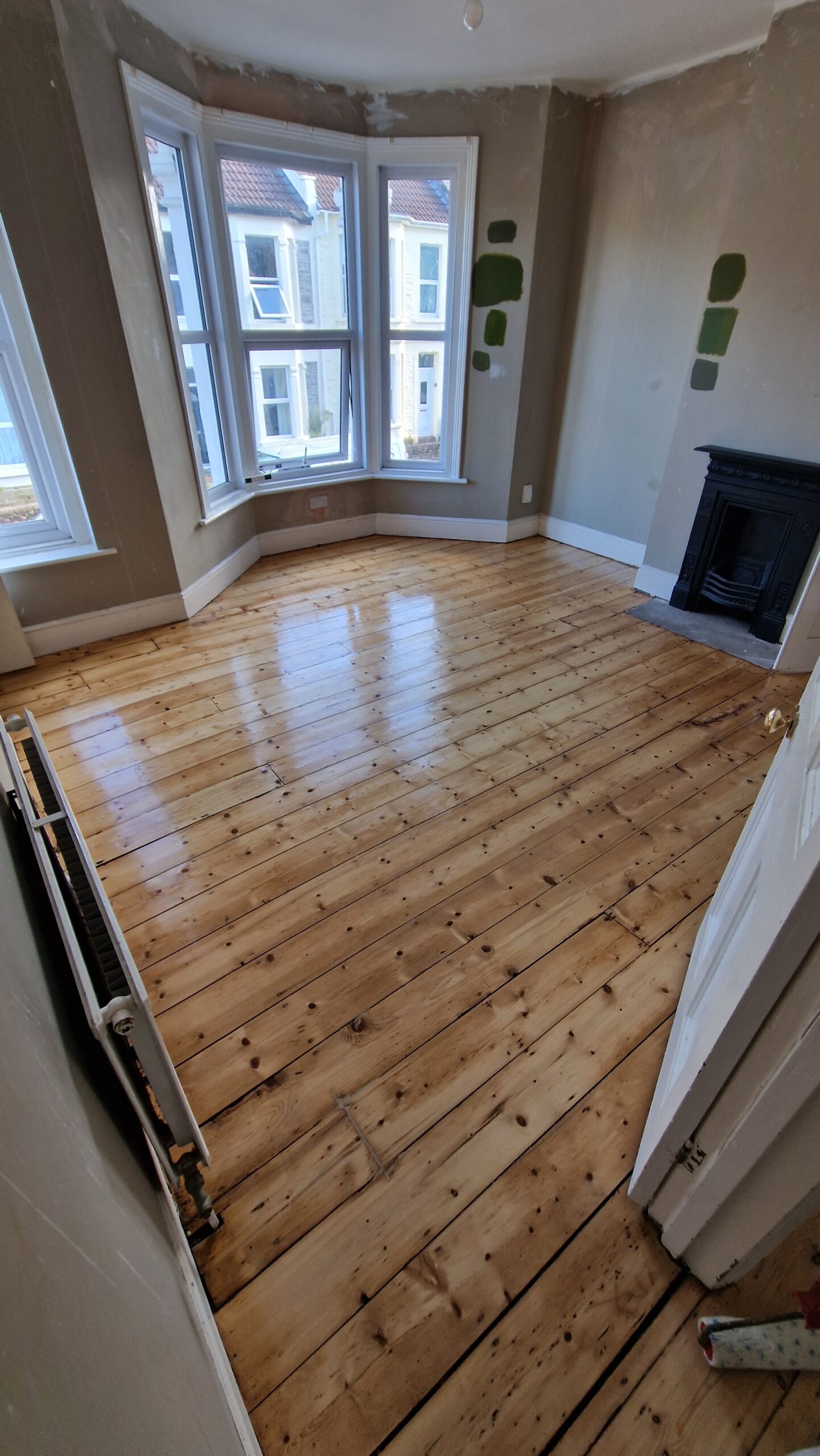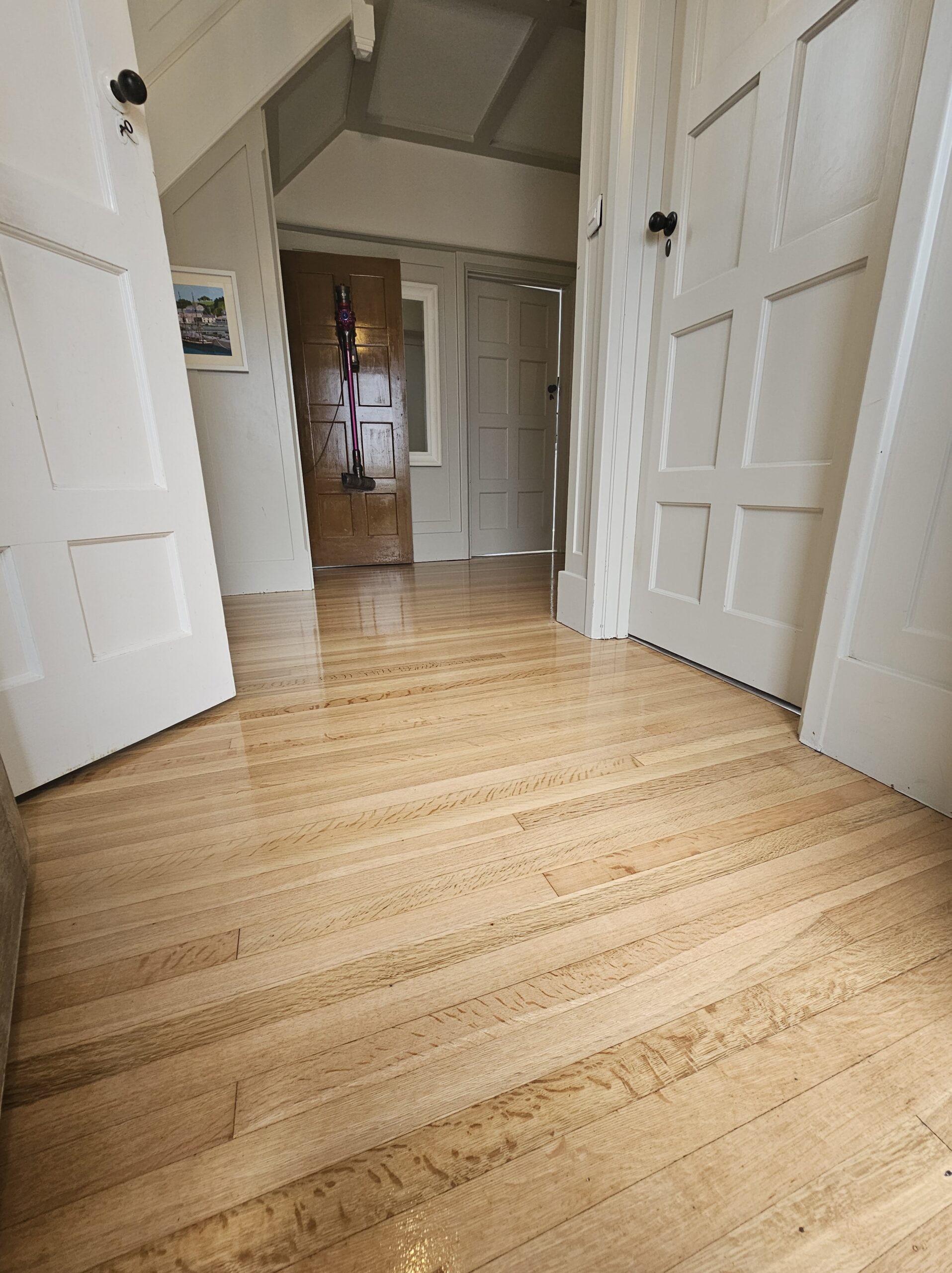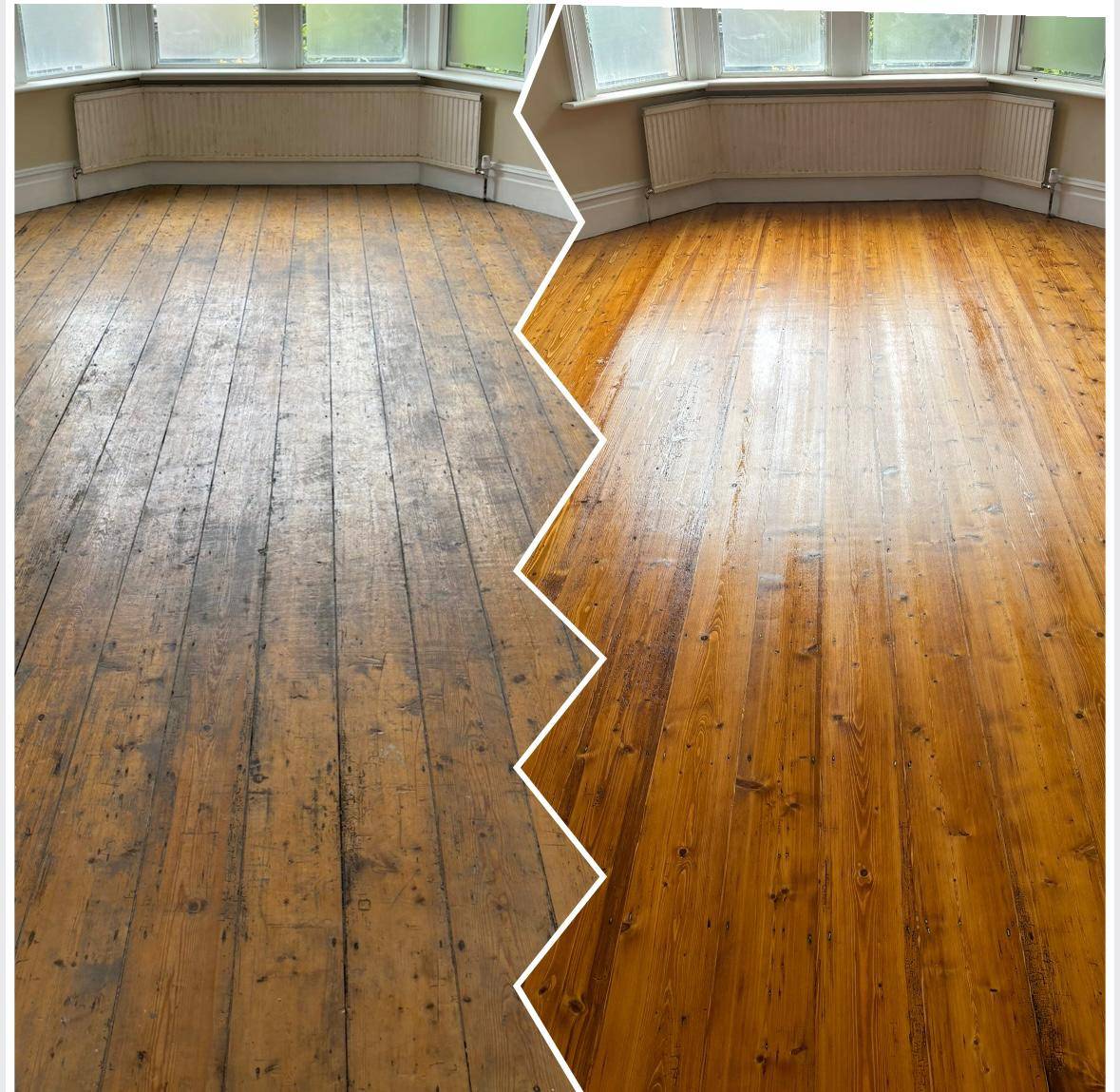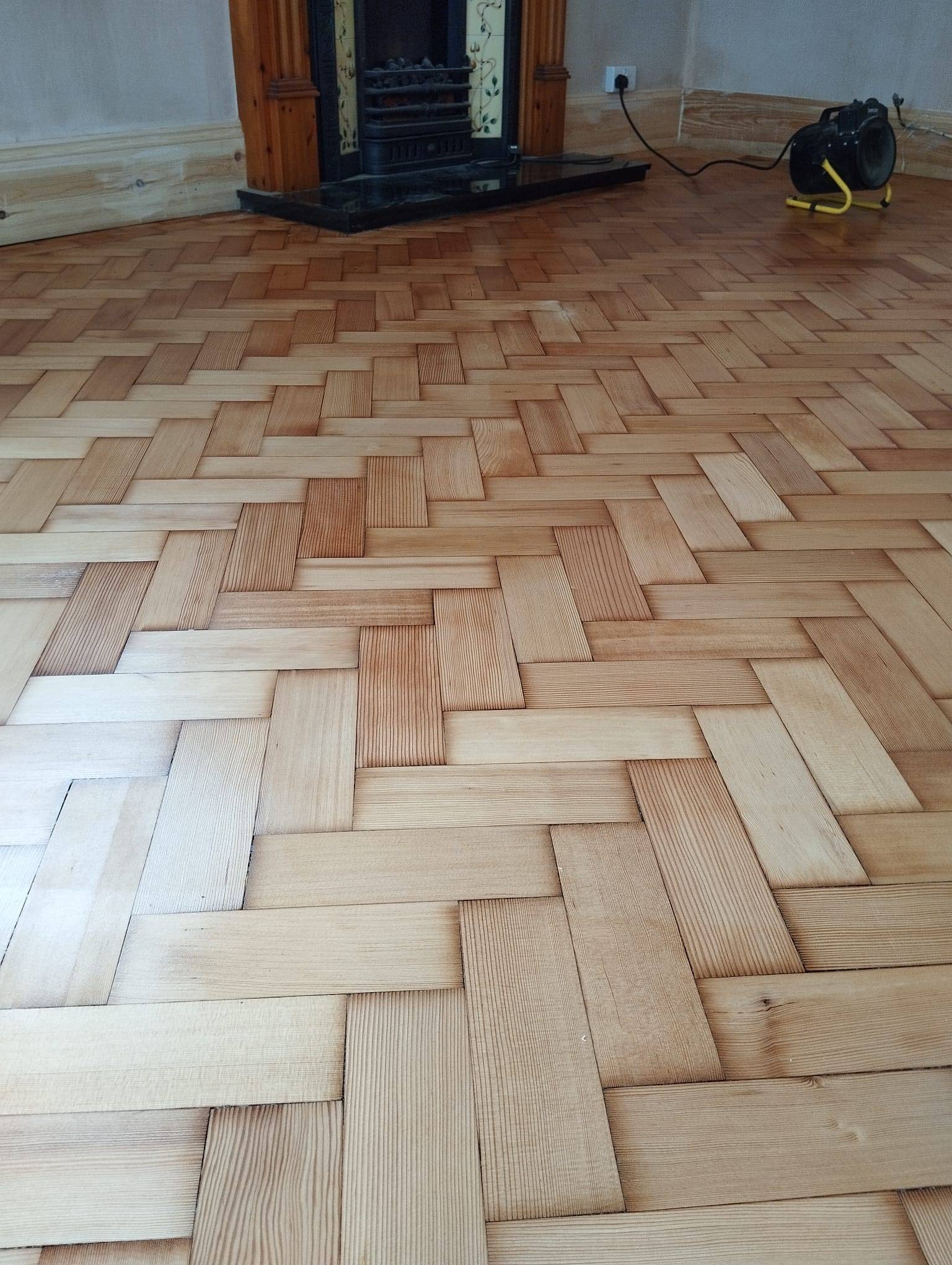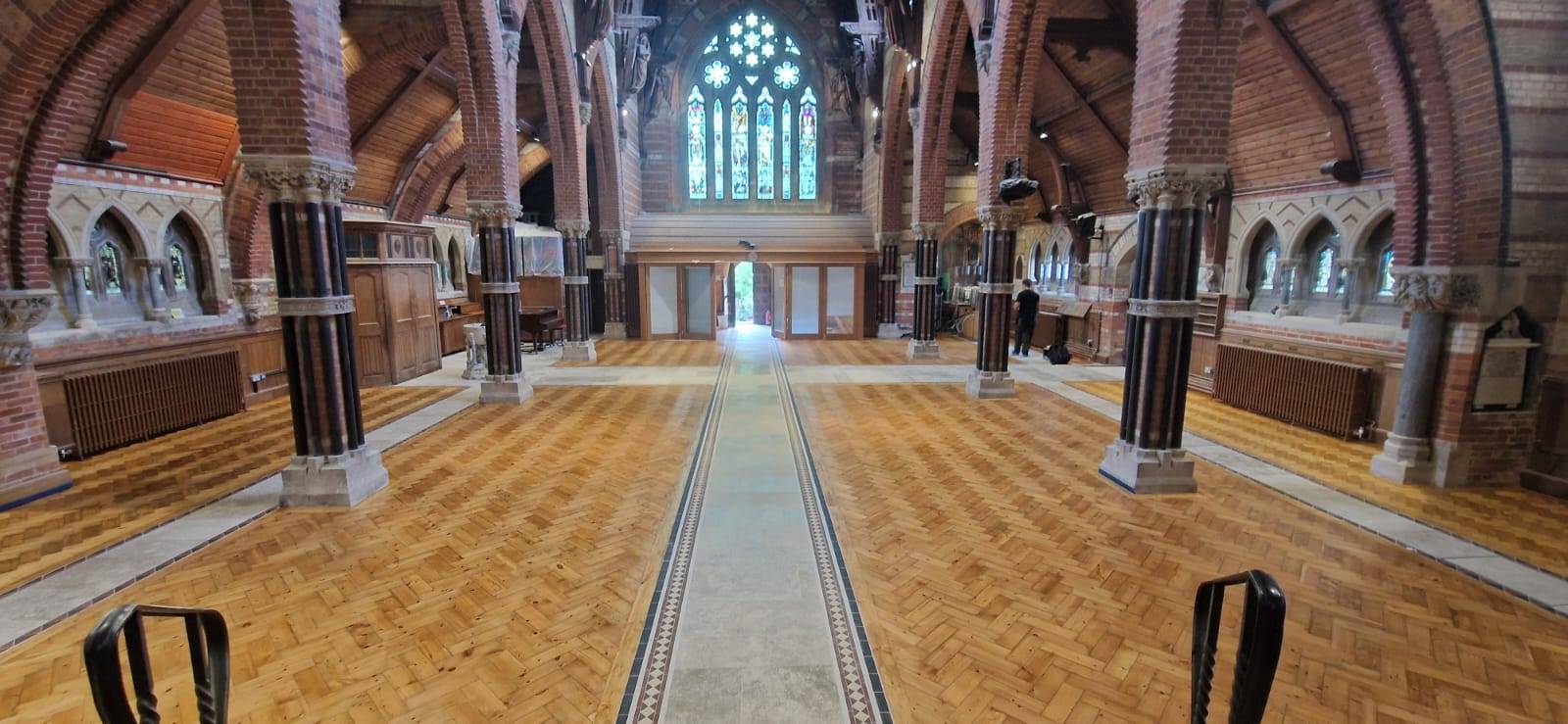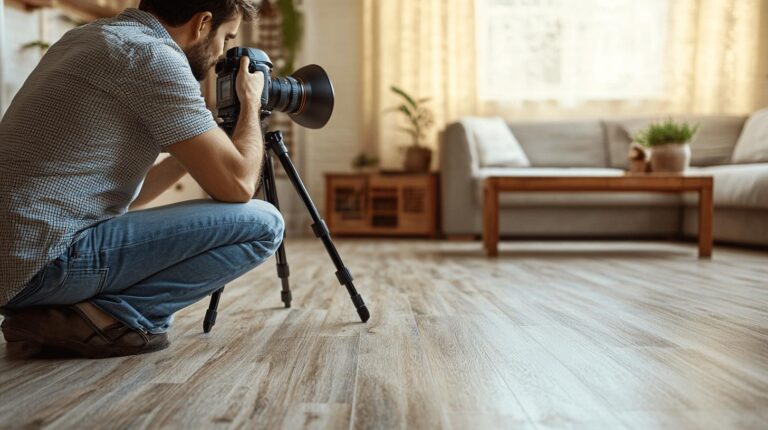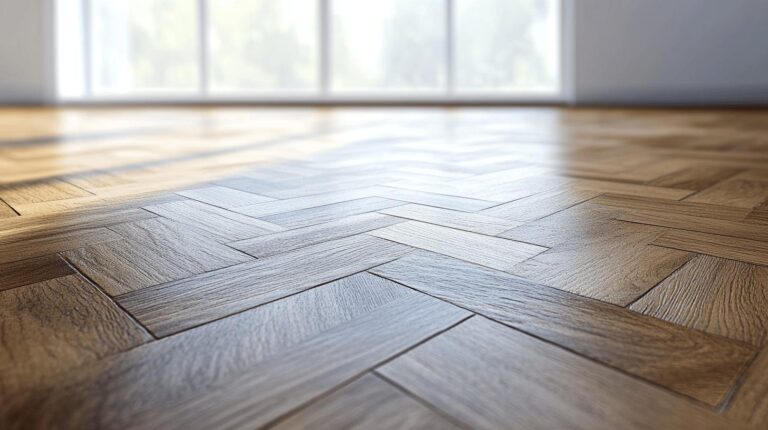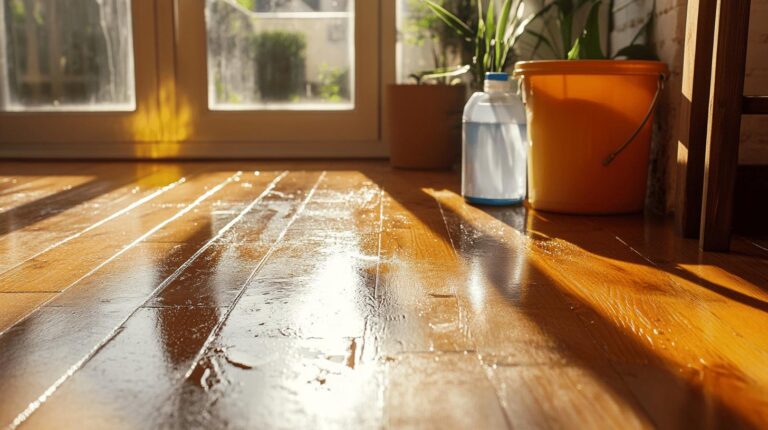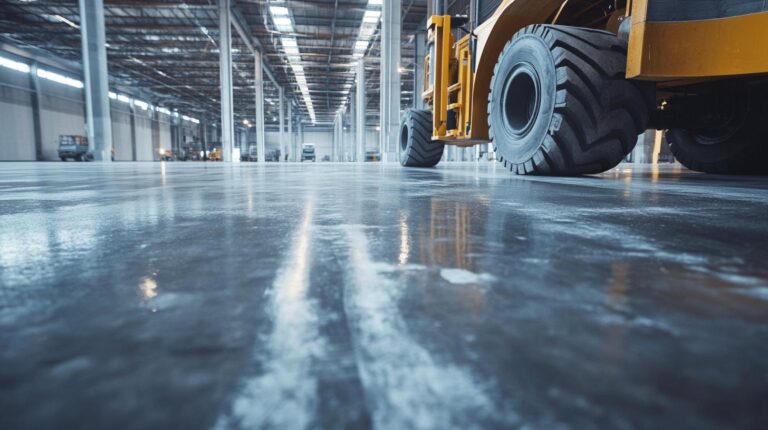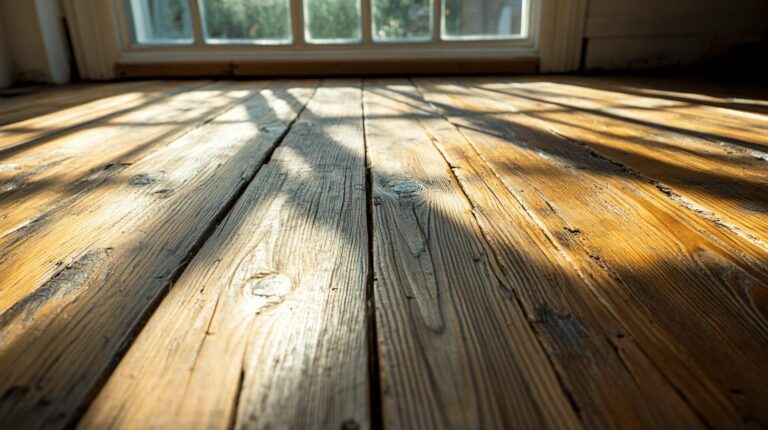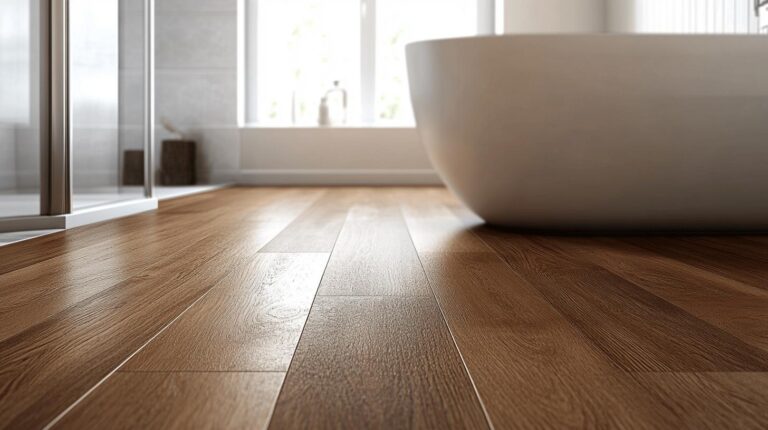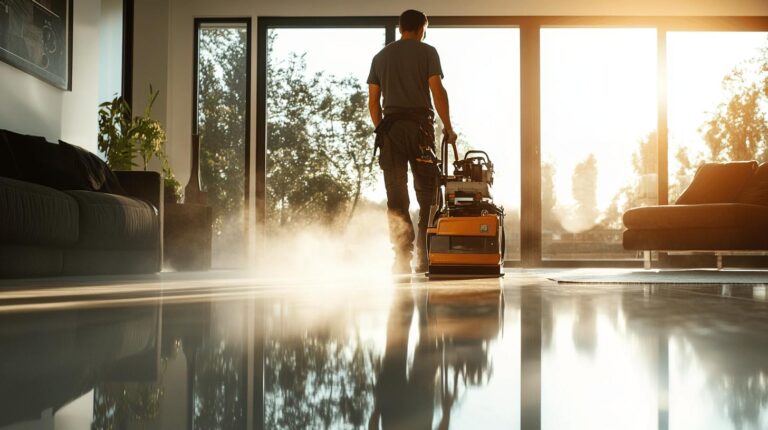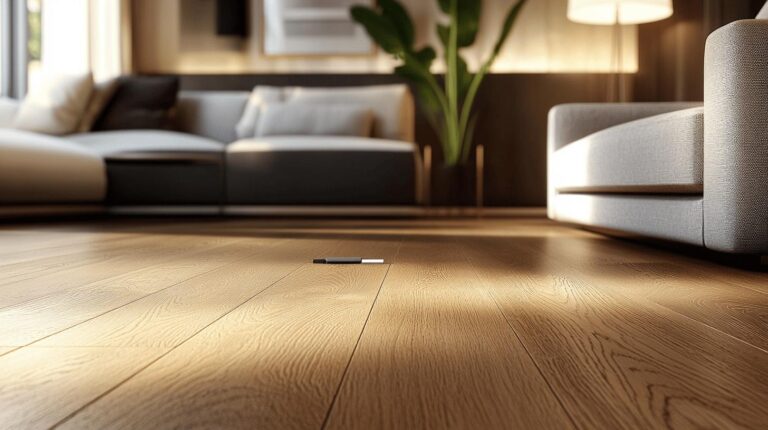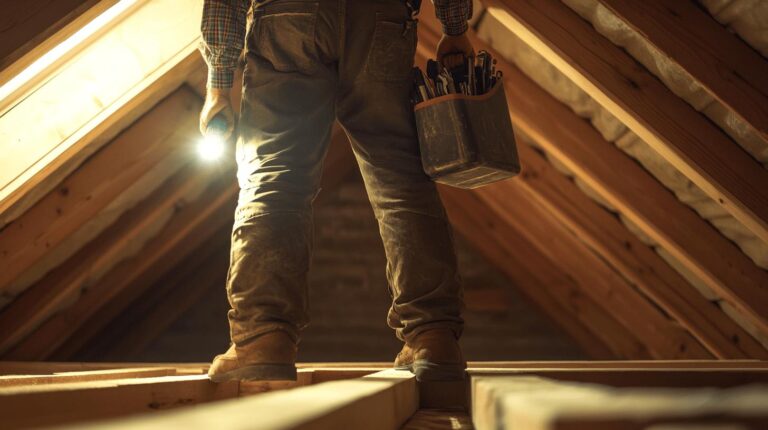Imagine transforming your home into a charming haven without the expense and chaos of a full renovation. Restoring wooden floors is not only a cost-effective way to elevate your home’s character but also an eco-friendly alternative to replacing floorboards. With the right tools and know-how, you can revitalise your floors to their former glory. Whether you’re seeking to restore floorboards with or without sanding, our guide provides essential steps and insights. Discover how to breathe life back into your floors and increase your home’s charm and appeal.
Essential Steps to Restore Wooden Floors
Restoring wooden floors is a cost-effective approach to rejuvenating a home’s character, particularly in period properties. By preserving the original floorboards, homeowners can maintain the unique charm of their residence while saving on the expenses associated with full replacement. Essential tools for the restoration process include a floor drum sander and an edging sander, which can be conveniently hired, offering the flexibility to restore multiple rooms over a weekend. Proper preparation is crucial, requiring an assessment of the floorboards’ condition and the replacement of any damaged sections. Sanding not only removes the worn finish but can also be complemented by re-varnishing to address minor surface imperfections.
Here is a structured guide to the restoration process:
- Assessment: Examine the condition of the floorboards, identifying any damage, particularly in high-moisture areas like kitchens and bathrooms.
- Cleaning: Thoroughly clean the floor to remove dirt and debris, which can interfere with the sanding process.
- Sanding: Employ a drum sander for the main areas and an edging sander for corners and skirting boards, following the wood grain for a smooth finish.
- Finishing: Apply a suitable wood dye and varnish, or opt for water-based finishes for durability in high-traffic zones.
- Maintenance: Implement a routine maintenance plan, including regular cleaning and protective measures to prolong the floor’s life.
For minor surface issues, there are alternative methods to consider. Sanding and re-varnishing might be sufficient to restore the floor’s appearance, offering a less invasive option than full sanding. This approach is particularly useful for addressing scratches and scuffs, providing a refreshed look without extensive effort.
Tools and Materials Required for Wooden Floor Restoration
For effective wooden floor restoration, essential tools include a floor drum sander and an edging sander. These tools are vital for achieving a smooth finish by removing the top layer of the wood’s surface. The drum sander is used for the main floor areas, while the edging sander is perfect for reaching corners and along skirting boards. To make the process more affordable, these sanders can be hired for approximately £72 over a weekend, providing a practical option for DIY enthusiasts aiming to restore multiple rooms without incurring high costs.
Selecting high-quality materials is crucial for the durability and appearance of restored wooden floors. Wood dyes are used to enhance the wood’s natural colour and grain, creating a rich aesthetic appeal. Varnishes and finishes, particularly water-based options, provide a protective layer that withstands wear and tear, essential for high-traffic areas. Investing in reputable products ensures the longevity of the restoration, safeguarding the floors against future damage and maintaining their charm for years to come.
Cost Considerations for Restoring Wooden Floors
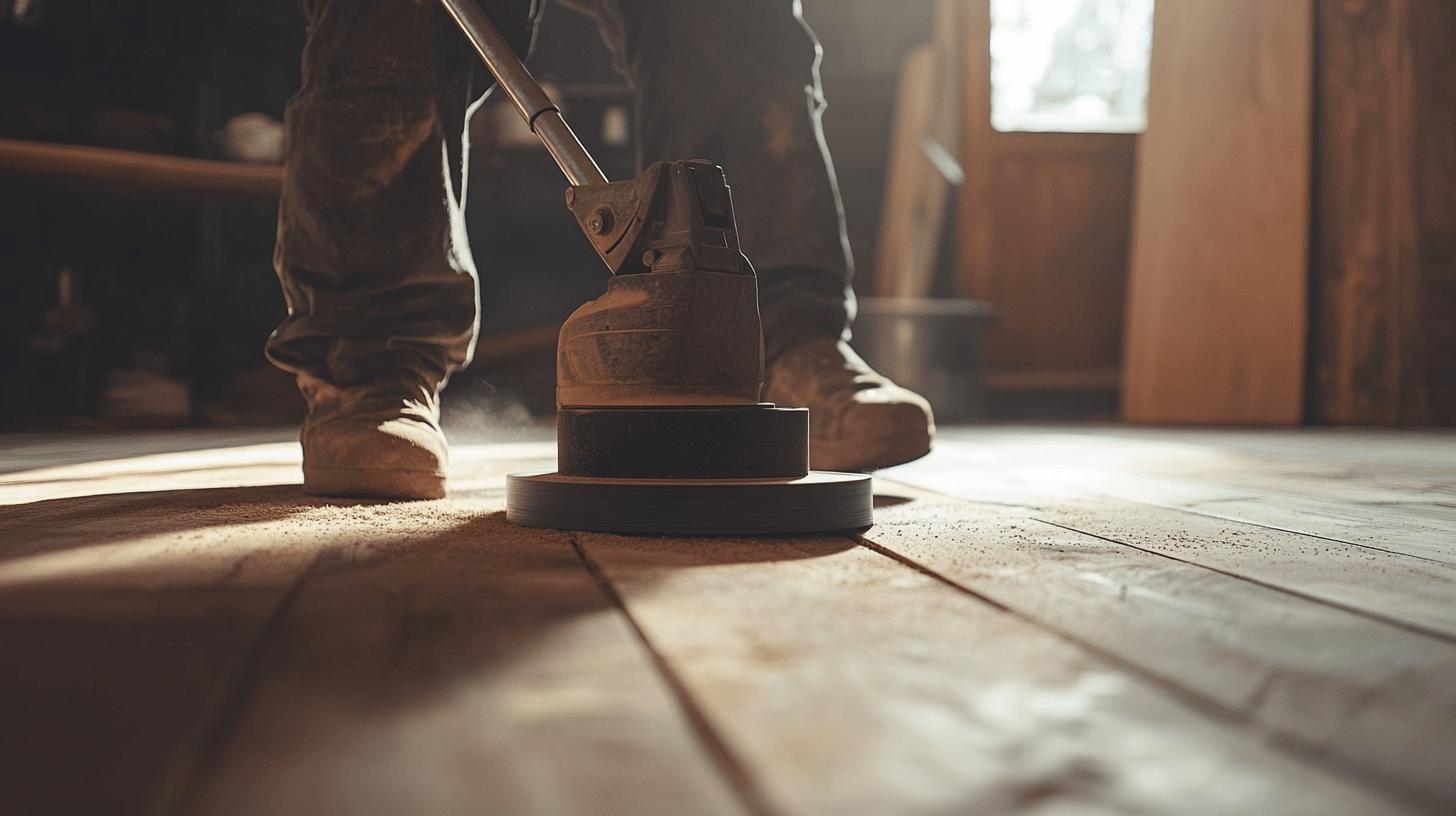
Restoring wooden floors can be significantly more economical than opting for a complete replacement, particularly in high-traffic areas where floors endure substantial wear. The average cost of wooden floor restoration, when handled professionally, is approximately £25 per square meter. This fee covers the expertise required for sanding, staining, and sealing processes, offering a revitalised appearance without the need for new materials. Additionally, labour costs typically amount to an extra £150, making it a cost-effective alternative to replacement, which can be notably more expensive due to the price of new wood and installation.
When deciding between DIY restoration and hiring professionals, consider the following:
- DIY Restoration:
- Cost: Lower initial cost as you avoid labour fees.
- Pros: Greater control over the process and potential savings.
- Cons: It requires skill, time, and the hiring of necessary equipment, which can be challenging for beginners.
- Professional Services:
- Cost: Around £25 per square meter plus £150 for labour.
- Pros: High-quality finish, expertise in handling complex repairs.
- Cons: Higher upfront cost compared to DIY.
- Quality: Professionals often provide a more consistent and durable finish.
Additional expenses should be considered when planning a restoration project. Materials such as wood dyes, varnishes, and finishes can add to the overall cost, depending on the quality and type selected. It’s also wise to budget for unexpected repairs, such as replacing severely damaged floorboards or addressing structural issues that may arise during the restoration. Proper financial planning ensures that the finished result is both aesthetically pleasing and within budget, providing a transformed living space without financial strain.
Professional Wooden Floor Restoration Services
Opting for professional wood floor restoration services offers numerous advantages, particularly in achieving a flawless finish through expert sanding, staining, and sealing. Professionals possess the specialised equipment and skills required to handle even the most complex restoration challenges, ensuring that the floors are restored to their original splendour. This not only saves time but also guarantees a quality result that is often difficult to achieve with DIY methods. Engaging in a professional service allows homeowners to avoid the potential pitfalls of incorrect sanding or finishing, which can lead to further damage and additional costs.
Ryan’s Restoration stands out as a leading wood floor restoration company in the UK, renowned for its comprehensive services and expertise. They provide a full range of wooden floor refurbishing services tailored to the specific needs of each client, from minor repairs to complete overhauls. With a focus on quality and efficiency, Ryan’s Restoration ensures that each project is executed with precision, resulting in beautifully restored floors that enhance the overall charm and value of a home. Their commitment to customer satisfaction and high standards make them a preferred choice for homeowners seeking professional restoration solutions.
Maintenance Tips After Restoring Wooden Floors
Regular maintenance and buffing is crucial for preserving the beauty and longevity of restored wooden floors. Neglecting proper care can lead to deterioration, diminishing the aesthetic appeal and functional benefits of the flooring. Frequent cleaning is essential to remove dust and dirt, which can scratch the surface over time. Additionally, preventing water damage is vital, as moisture can warp and stain wooden floors, undermining their integrity. By adopting a consistent maintenance routine, homeowners can protect their investment and ensure their floors remain a stunning feature of their home.
- Cleaning: Sweep or vacuum regularly to eliminate dirt and debris that can cause scratches and wear.
- Oiling: Apply oil periodically to enhance the wood’s natural beauty and provide a protective, water-repellent layer.
- Buffing: Use a soft buffing pad to add a polished sheen to the floor, enhancing its appearance and extending the finish’s lifespan.
- Preventing Damage: Use rugs and mats in high-traffic areas and implement furniture pads to avoid dents and scuffs.
Long-term care of wooden floors involves not only routine cleaning and maintenance but also addressing any issues promptly. Regular inspections can identify potential problems, such as loose boards or fading finishes, allowing for timely interventions. By maintaining the floor’s appearance and functionality through these practices, homeowners can enjoy the charm and warmth of their wooden floors for many years.
Final Words
Restoring wooden floors is a cost-effective method to revitalise a home’s charm. This process involves assessing, cleaning, sanding, finishing, and maintaining the floors to achieve impressive results. Essential tools like a floor drum sander and quality materials are crucial for successful outcomes. Understanding the financial implications, whether opting for DIY or professional services, helps in making informed decisions. Hiring experts like Ryan’s Restoration can ensure superior quality and save time. With consistent maintenance, restored floors can enhance the home’s aesthetics, offering lasting beauty and value.
FAQ
Q: How can I restore wooden floors without sanding?
A: Restoring wooden floors without sanding can be achieved using techniques like deep cleaning, applying wood floor restorer, or buffing to enhance shine and remove minor scratches.
Q: What is the cost of restoring wooden floors in the UK?
A: The cost of restoring wooden floors in the UK varies, with professional services averaging £25 per square metre and an additional £150 for labour. DIY methods can reduce costs significantly.
Q: How can I make my wood floors look new again?
A: To make wood floors look new, thoroughly clean them, apply a wood floor restorer, polish regularly, and ensure any damage is repaired promptly using kits or by hiring professionals.
Q: Can a wooden floor be fully restored?
A: Yes, wooden floors can be fully restored through a process involving assessment, cleaning, sanding, finishing, and ongoing maintenance, which revitalises their appearance and prolongs their lifespan.
Q: Which products and tools are essential for wooden floor restoration?
A: Essential tools for wooden floor restoration include a floor drum sander, edging sander, wood dyes, varnish, and water-based finishes for durability. These items can usually be hired or purchased.
Q: What are the benefits of hiring professionals for wood floor restoration?
A: Hiring professionals ensures expert sanding, staining, and sealing of wooden floors, resulting in quality outcomes. Companies like Ryan’s Restoration in the UK offer comprehensive services, saving time and effort.
Q: How do I maintain my wooden floors after restoration?
A: Maintenance includes regular cleaning, oiling for enhanced beauty and water-repellent properties, buffing to add sheen, and preventing water damage to preserve your floor’s appearance and functionality long-term.
